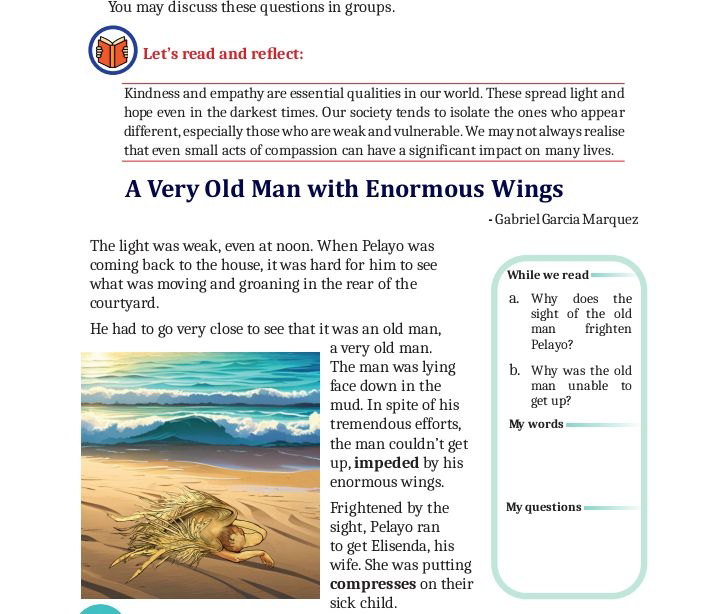SHOULD THE ASSASSIN OF GANDHI BE KILLED?
SHOULD THE ASSASSIN OF GANDHI BE KILLED?
Pearl S. Buck
Introduction
Pearl Sydenstricker Buck was an American writer and novelist. As the daughter of missionaries she spent most of her life before 1934 in China. Her novel The Good Earth was the best selling fiction in 1931 and 1932. In 1938 she was awarded the Nobel Prize in Literature “for
her truly epic descriptions of peasant life in China and for her biographical masterpieces.” On 30th January 1948 India witnessed the tragic assassination of Mahatma Gandhi at the Birla House in New Delhi. Naturam Vinayak Godse was his assassin. Gandhi’s greatest weapon was non-violence. His life and teachings touched people outside India and inspired movements for civil rights and freedom across the world. He has inspired people around the world and Pearl S.Buck, the American writer and novelist was one among them. In her words: “Mahatma Gandhi came and stood at the door of India’s destitute millions, clad as one of themselves.”
I. Answer the following questions
1. According to Pearl S.Buck, __________ is the only commonsense of human beings.
a. Violence b. Fearlessness c. non violence d. Silence
Ans: Non-violence
2. Men wind confusion and entanglements because they are afraid of ______.
a. Violence b. NonViolence c. Simple Truth d. Conscience
Ans: Simple truth
II. Answer the following questions in a sentence or two:
1. What is more powerful than bombs and weapons?
The force of a great good spirit.
2. Why did the people believe in Gandhi?
He put his words into practice and people saw this was true.
3. What does the world long for?
The world longs for peace and peacemakers
4. Who are the lot referred to as the lovers of violence?
The ignorant, stupid, the inventors of atom bombs, the generals, the captains, the sergeants and the little soldiers.
5. What is the fate of those who rebel against the lovers of violence?
The warmongers will end them in the pull of a trigger, in a flash or in a blast.
III. Answer the following questions in a paragraph:
1. Why do the inventors of atom bombs love violence?
Atom bombs bring epic destruction. It is the stupid, ignorant man’s response to all that he fears, all that he hates and to all those who rebel against him. They think the world is a better place when everything is replied with ‘war’. The inventors of atom bombs are those who use it on innocent people and powerless nations. Mahatma Gandhi strongly rejected protests by means of violence and highly recommended non-violence to the world nations. He confronted violence as
the gravest sin, for violence only brings more violence. Gandhi famously said. “An eye for an eye makes the whole world blind.”
2. What proves Gandhi’s righteousness?
Gandhi was truth. He knew he was right and the world knew he was right, even his murderer knew he was right. Truth is simple to follow. The followers of violence distort truth and simple truths are feared. The world no more needs violence, hatred or quarrels but peace and peacemakers. Non-violence was the ultimate truth to which Gandhi was inclined. His principles
and teachings made sense to the common people. His was the voice of the many Indians. His life exemplified whatever he taught his followers. In that contained his greatness. He was indeed a simple man with great wisdom.
3. What will happen if Gandhi’s assassin is released?
Pearl S.Buck comes up with a non- violent punishment for the assassin of Gandhi. She says he should be released from the heavily guarded prison. He wouldn’t be welcomed by anywhere. He cannot hide anywhere in this world. He could never escape what he has done! In fact there is
no escape from one’s own conscience. Women and children would despise to go near him and none would want to shake hands with him for those hands are the hands that killed Gandhi. He would be an outcast everywhere, even among his friends. He would be haunted by Gandhi’s own spirit. All these would be utter mental torture for him and lead to his destruction. If he has a conscience it would be his regeneration because through salvation there is peace and Gandhi loved to forgive.
IV. Answer the following in about 300 words:
1. Discuss Pearl S. Buck’s portrayal of Mahatma Gandhi in her essay.
On the death of Gandhi, Pandit Jawaharlal Nehru mourned: “the light has gone out of our lives and there is darkness everywhere.” He was a man of great visionary to bring India forward. Gandhi was only one. His voice was single, gentle and full of wisdom. It was the voice of
conscience in our troubled lives. Gandhi was truth. He knew he was right and the world knew he was right, even his murderer knew he was right. Truth is simple to follow. The followers of violence distort truth and simple truths are feared. The world no more needs violence, hatred or quarrels but peace and peacemakers. Non-violence through Ahimsa and Satyagraha were the ultimate truth to which Gandhi was inclined. His principles and teachings made sense to the common people. His was the voice of the many Indians. His life exemplified whatever he taught his followers. In that contained his greatness. The lovers of violence often do not realize that great words and great teachings are etched into society in positive ways. Gandhi has done his part. Though the indomitable figure is out of
our lives,it is the people of India who must take up his qualities and follow it in their lives and move India forward. As Albert Einstein famously said: “ Generations to come, it may be will scarce believe that such a one as this ever in flesh and blood walked upon this earth.” That was his
disposition. He did not wish punishment even for his enemies. Gandhi was often in prison and he might not wish his murderer confined to a prison.His life was ideal, a perfect example for everyone to look on. He was the ‘great leader’ of ‘moral and right’.
****************************



This comment has been removed by a blog administrator.
ReplyDelete